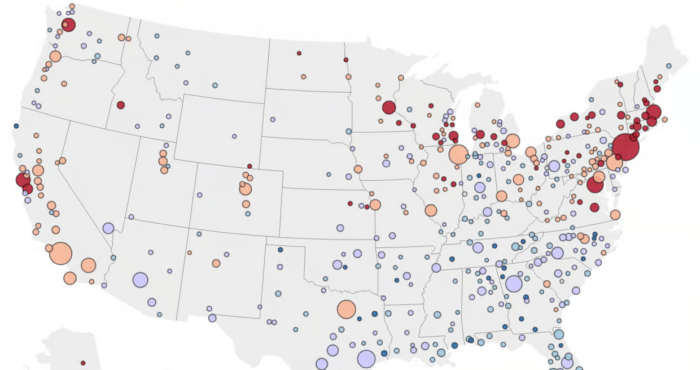
When exploring the benefits of homeownership, it’s more than just having a place to call your own. Among its many advantages, homeownership stands as a formidable safeguard against inflation and a strong vehicle for long-term wealth accumulation. This article will delve into the dynamics of appreciation and amortization, explaining why owning a home can be one of the most impactful financial decisions you can make.
Inflation, the overall upward price movement of goods and services in an economy, erodes the purchasing power of money. In simpler terms, as inflation rises, each dollar you have buys a smaller percentage of a good or service. The same inflation that is driving rising mortgage rates is putting upward pressure on home prices and rents.
Over the past sixty years, homes have appreciated in value at an annual appreciation rate of 5.56% according to the Federal Reserve Economic Data. As a homeowner, you want to benefit from the appreciation. Inflation for the same period averaged 3.7% (Bureau of Labor Statistics) making homes an effective hedge against inflation.
Real estate, unlike many other assets, is a tangible, real asset. History has shown that over the long term, the value of real assets tends to rise at a rate that at least matches, if not outpaces, inflation. So, as the price of goods and services increases, so does the value of real estate, making homeownership a strategic move against inflationary pressures.
With a fixed-rate mortgage, your monthly principal and interest payment remains constant. As a result, while other costs may rise due to inflation, your primary housing cost (if you exclude taxes and maintenance) remains stable, shielding you from the full impact of inflation.
Home appreciation refers to the increase in the home’s value over time. Given the finite nature of land and the ever-growing demand for housing, especially in thriving areas, real estate often appreciates. This appreciation can result in substantial equity gains for homeowners, creating a form of ‘forced savings’ and making it a powerful tool for wealth accumulation.
Amortization has been considered the silent wealth builder. Each time you make a mortgage payment, a portion of that payment goes toward the loan’s interest, and the balance pays down the principal, thus retiring your debt incrementally. This process means you’re gradually building equity in the home with each payment. Over time, a larger portion of your payment goes towards the principal, accelerating your equity buildup.
Combined, appreciation and amortization can lead to significant wealth growth for homeowners. As the home’s value rises and the mortgage balance decreases, homeowners often find themselves sitting on a substantial asset, which can be leveraged in various ways, from securing loans to planning retirement.
While the emotional and social benefits of homeownership are often celebrated, the financial benefits are equally compelling. In a world of economic uncertainties and inflationary pressures, owning a home emerges not just as a source of stability but also as a strategy for long-term financial prosperity. By understanding and leveraging the twin forces of appreciation and amortization, homeowners can pave a path to meaningful wealth accumulation even during periods of relatively high mortgage rates.
For more information, download an information guide on Building a Case for Homeownership Today.


